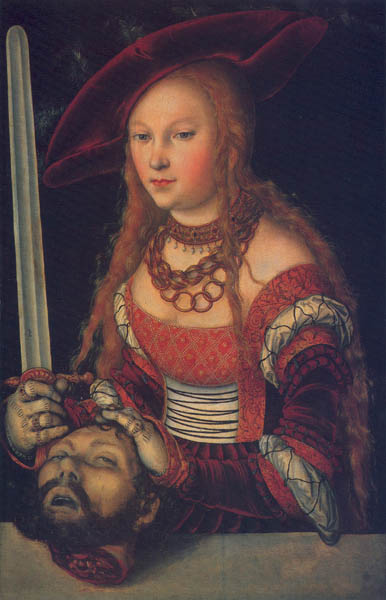Image Details

Kunsthistorisches Museum, Vienna/©Erich Lessing
Displaying her trophy; this bejeweled and velvet-gowned Judith looks more like an impassive lady from a 16th-century German court than like an Israelite beauty of the first century B.C.E. Ever since Judith cut off Holofernes’ head, lamented 19th-century author and art critic John Ruskin, she has been made the highlight of “about a million vile pictures…in which the painters thought they could surely attract the public to the double show of an execution, and a pretty woman.”
Although often depicted by artists as calculating and cold—as in this painting by Lucas Cranach the Elder (1472–1553)—Judith nevertheless won praise for her courage and her piety. When she returned to her Galilee village with the head of Holofernes, the village’s chief magistrate Uzziah exclaimed: “My daughter, more blessed are you by God Most High than all women on earth…May God grant you every blessing! For you risked your own life when our nation was brought to its knees. You went out boldly to meet the disaster that threatened us, walking a straight line before our God” (Judith 13:18, 20).
